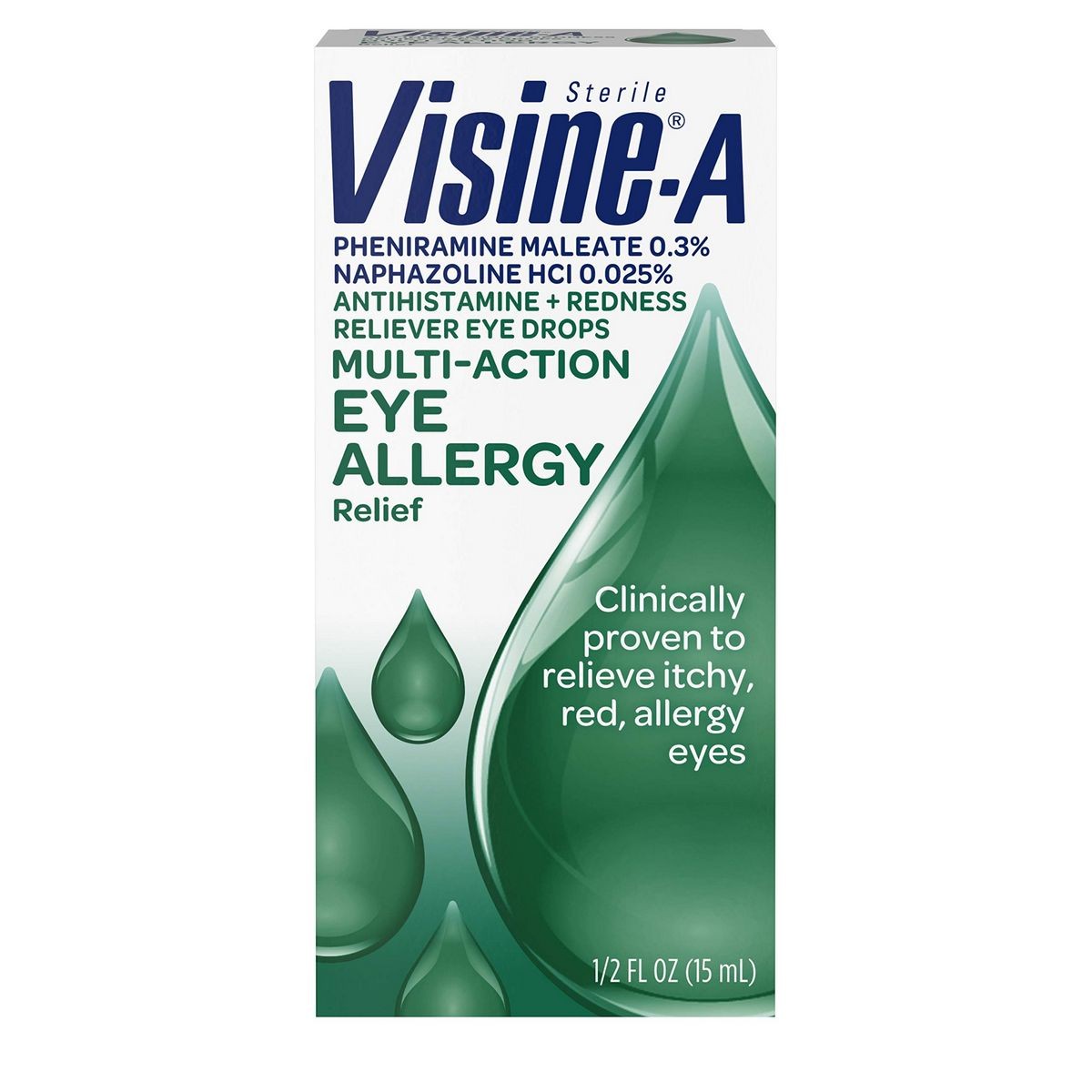
Contents
naphazoline/pheniramine
Naphazoline/pheniramine ophthalmic is a combination medication used to temporarily relieve redness, watering, itching, and swelling of eyes from allergic conjunctivitis. It works by constricting blood vessels in the whites of the eyes and reducing allergic reactions. This medication is available over the counter (OTC) and is applied topically to the eye. The two components of the drug work as follows:
- Naphazoline: Reduces eye redness by constricting blood vessels in the outer membrane of the eyes.
- Pheniramine: Blocks the release of histamine, reducing swelling, watering, and itching caused by allergens.
Warnings
- Do not use if hypersensitive to any component of the formulation.
- Do not give to children below 6 years without a pediatrician’s supervision.
- May cause transient stinging or tingling.
- Excessive use can increase eye redness.
- Can dilate pupils and cause blurred vision and light sensitivity.
- Consult a physician if you have certain conditions such as narrow angle glaucoma, eye infection or injury, high blood pressure, heart disease, enlarged prostate, overactive thyroid, or diabetes.
- Seek medical attention if eye redness and/or irritation worsen or persist for longer than 72 hours, or if you develop eye pain or vision changes.
Side Effects
Common side effects include stinging or tingling sensation in the eye, ocular hyperemia, blurred vision, and mydriasis.
Call your doctor immediately if you experience serious symptoms:
- Fast or pounding heartbeats, fluttering in your chest, shortness of breath, or sudden dizziness.
- Severe headache, confusion, slurred speech, severe weakness, vomiting, loss of coordination, or feeling unsteady.
- Severe nervous system reaction, including stiff muscles, high fever, sweating, confusion, fast or uneven heartbeats, tremors, and feeling like you might pass out.
- Severe eye symptoms, including blurred vision, tunnel vision, eye pain or swelling, or seeing halos around lights.
This is not a complete list of side effects or adverse reactions. Consult your doctor or report any side effects to the FDA.
Dosages
Ophthalmic solution:
- 0.025%/0.3%
- 0.027%/0.3%
Adult and Pediatric:
- Children below 6 years: Safety and efficacy not established.
- Indicated for adults and children 6 years and above.
Allergic Conjunctivitis:
- Instill 1-2 drops in affected eye(s) up to 4 times daily.
Other Information:
- Remove contact lenses before use.
- Store at room temperature, protect from light and excessive heat, and use before expiration date.
Overdose:
- Unlikely to result in an overdose when used topically on the eyes.
- In case of oral overdose, seek immediate medical help or contact Poison Control.
Drug Interactions
Inform your doctor of all medications you are currently taking to avoid any possible drug interactions. Do not change your medication without your doctor’s recommendation. Severe interactions can occur with ergot derivatives, iobenguane radiopharmaceutical products, kratom, lisuride, and monoamine oxidase inhibitors.
- Bromocriptine
- Cocaine topical
- Esketamine
- Linezolid
- Zavegepant
This is not a complete list of drug interactions. For more information, consult the RxList Drug Interaction Checker.
Tell your doctor or pharmacist about all prescription and over-the-counter medications you use. Keep a list of the information and consult with your healthcare provider if you have any questions or concerns.
Pregnancy and Breastfeeding
- Use with caution during pregnancy and breastfeeding, only if clearly needed.
- It is unknown if the drug is present in breastmilk. Use with caution in nursing mothers.
- Consult your physician before using any OTC drugs while pregnant or breastfeeding.
Additional Information
- Use as directed.
- Only for external topical use in the eyes.
- Do not use if solution changes color or becomes cloudy.
- Remove contact lenses before applying.
- Avoid touching the dispenser tip to prevent contamination.
- Replace the cap after each use.
- Store safely out of reach of children.
- In case of oral ingestion and overdose, seek immediate medical help or contact Poison Control.
Eye Health Resources
- IRD: The Importance of Early Diagnosis
- 12 Devices That Can Help Your Low Vision
- Wet AMD Treatments
Featured Centers
- What Are the Best PsA Treatments for You?
- Understanding Biologics
- 10 Things People With Depression Wish You Knew
Summary
Naphazoline/pheniramine ophthalmic is a combination medication used to temporarily relieve redness, watering, itching, and swelling of eyes from allergic conjunctivitis. Common side effects include stinging or tingling sensation in the eye, ocular hyperemia, blurred vision, and mydriasis.


